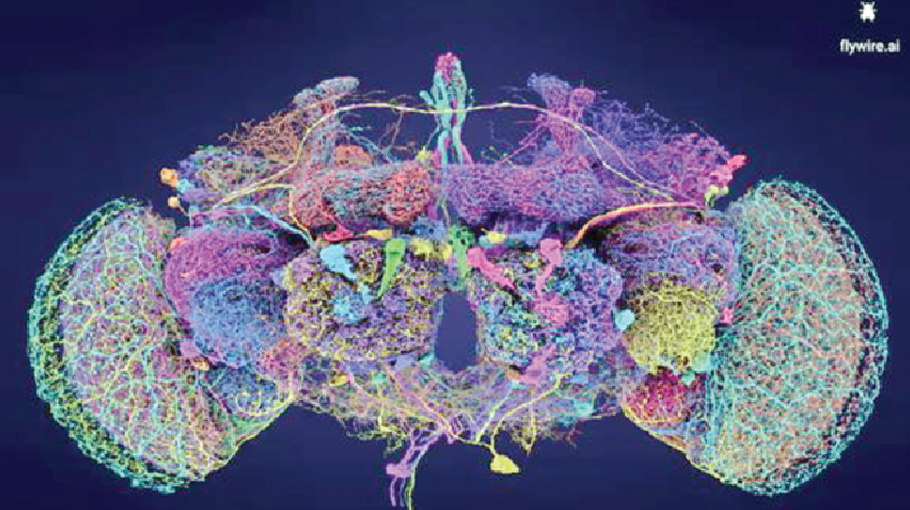Tiny brain, big breakthrough
Fruit Fly connectome set to transform neuroscience

Researchers have unveiled the first complete wiring diagram of a fruit fly brain, a breakthrough that could reshape our understanding of how brains generate behaviour. This ambitious project, known as FlyWire, took years to map out the 139,255 neurons and their 50 million connections in the fly's tiny brain, which is roughly the size of a poppy seed.
This information was revealed in a report that The Guardian published on Wednesday.
The team classified over 8,400 cell types, creating a comprehensive parts list for constructing a fly brain. "If we can truly understand how any brain functions, it’s bound to tell us something about all brains," said Sebastian Seung, a computer science and neuroscience professor at Princeton University and a project co-leader.
Mapping the intricate network involved slicing a female fruit fly brain into 7,000 thin sections, which were then analysed using electron microscopy to visualise structures as small as four millionths of a millimetre. Artificial intelligence was employed to sift through millions of images and trace neuron pathways, although human scientists were needed to correct AI errors.
The diagram has already yielded significant insights, including the identification of "interrogator" neurons that integrate various signals and "broadcaster" neurons that help coordinate activities across circuits. Researchers even discovered a neural pathway that halts a fruit fly's movement.
This connectome enables researchers to simulate parts of the fly brain digitally, aiding in understanding how neural wiring influences behaviour. Future efforts aim to map the mouse brain, while a comprehensive human brain diagram remains a daunting challenge due to its complexity.
"Simply put, we cannot fix what we do not understand," stated Dr. John Ngai, director of the NIH Brain Initiative, emphasising the importance of this research for understanding neuropsychiatric disorders.





